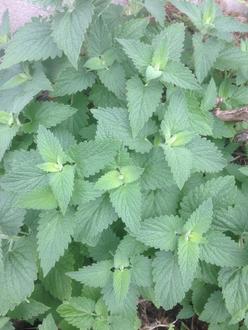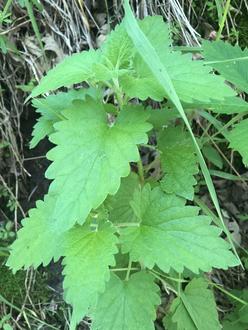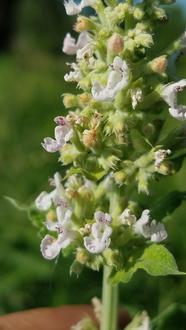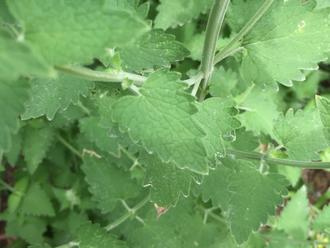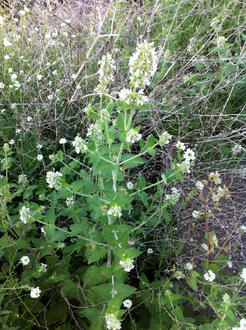Catnip (Nepeta cataria L.)
↑Summary
A perennial with a distinctive aroma, introduced in North America, best-known for its effect on cats.
↑Range - Expand
| Legend | Color |
| Introduced | |
| Introduced or Not Present |
This tentative map is based on our own research. It may have limited data on Canada and/or Mexico, and there is some subjectivity in our assignment of plants as introduced vs. expanded. Read more in this blog post.
Although this plant occurs somewhere in each of these regions, it may only occur in a small part of some or all of them.
This species is also introduced in Canada and Alaska; we have yet to build these portions of its map.
↑Similar Plants
↑Habitat
In North America, mostly found in sunny areas in a range of moisture conditions. Frequently found in gravely areas along railroad tracks, overgrown pastures, meadows, open woodlands, and limestone barrens. Mostly limited to anthropogenic habitats, but also found in natural areas, especially where there are limestone outcroppings.
Tolerates alkaline soils, rocky and gravely soils, and is more tolerant of dry conditions than most mint-family plants.
More widely established in the north.
↑Life Cycle
Catnip is an herbaceous perennial, shorter-lived than many mint-family perennials. It can form colonies by rhizomes, but is more often clump-forming and reproduces more by seed.
Plants often do not bloom in their first year.
↑Related Plants
There are three other Nepeta sp. and one hybrid, Nepeta x faassenii established in North America, all introduced; all are uncommon and only established locally at a few sites.
The broader Nepetoideae contains numerous plants, both native and introduced. Among these, the closest-related plants are probably the Prunella genus: common selfheal (Prunella vulgaris), which is widespread and has both native and introduced varieties, and cutleaf selfheal (Prunella laciniata) which is uncommon and locally introduced at a few sites. After these, the next-closest-related plants are probably the Mentha genus, which contains a few native and introduced species, and Monarda, which contains numerous native species.
↑Links & External Resources
• Nepeta cataria (Catnip) | Illinois Wildflowers (About This Site)
• Nepeta cataria (catnip) | USDA PLANTS Database (About This Site)
• Nepeta cataria | Go Botany (About This Site)
• Catnip | iNaturalist (About This Site)
• Nepeta cataria (Catnip) | Missouri Botanical Garden Plant Finder (About This Site)
• Nepeta cataria | Biota of North America Project (BONAP) (About This Site)
• Nepeta cataria | NatureServe Explorer (About This Site)
• Nepeta cataria | Missouri Plants (About This Site)
• Catnip | Maryland Biodiversity Project (About This Site)
• Nepeta cataria (Catnip) | Minnesota Wildflowers (About This Site)
• Nepeta cataria L. | Plants of the World Online (POWO) (About This Site)
• Nepeta cataria L. (Catnip, Catmint) | Digital Atlas of the Virginia Flora (About This Site)





